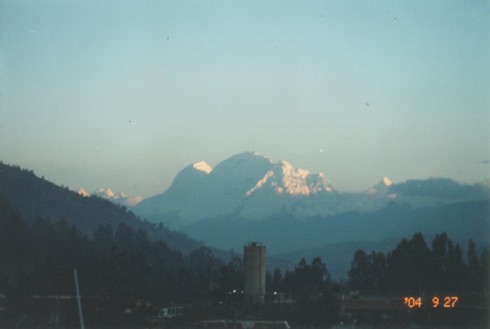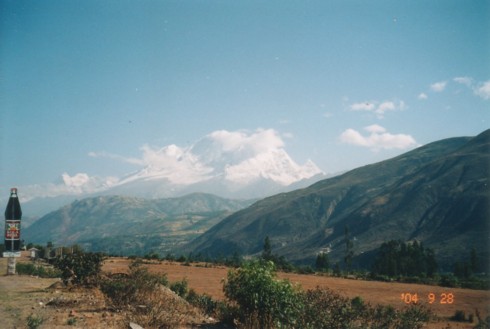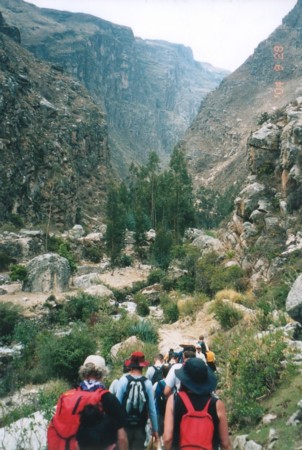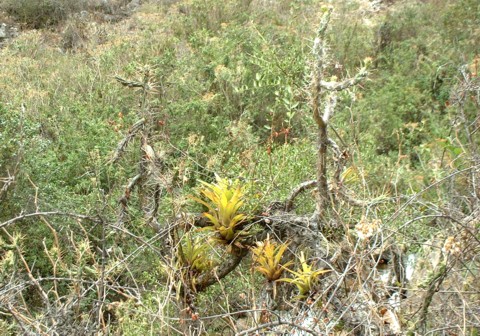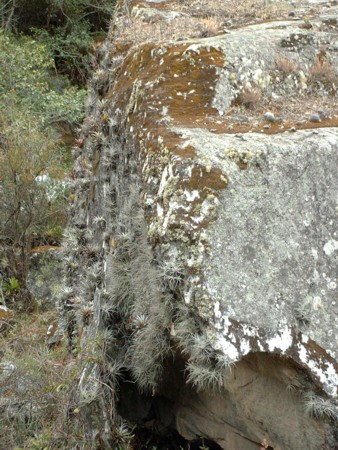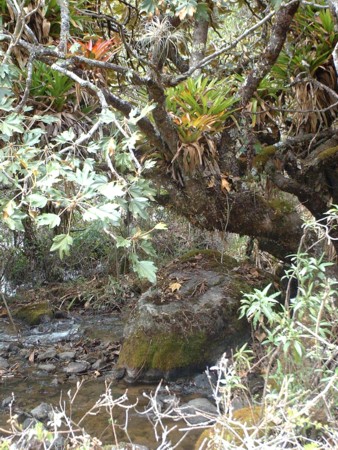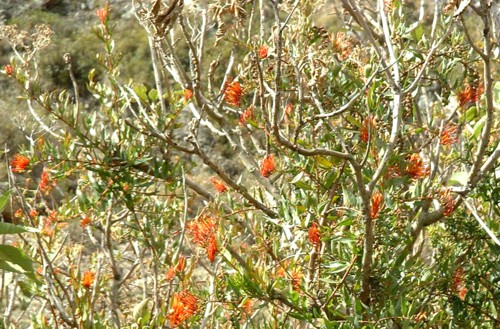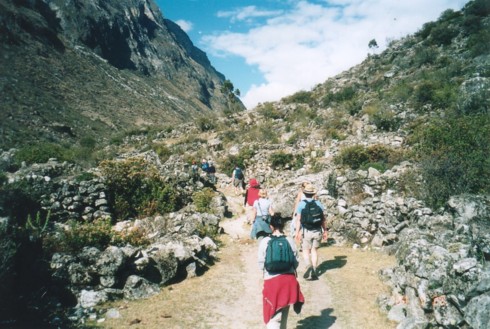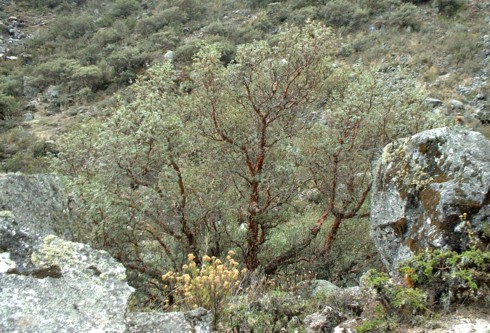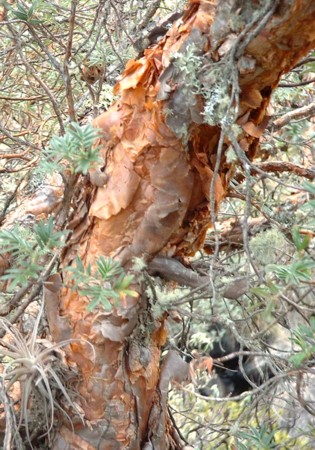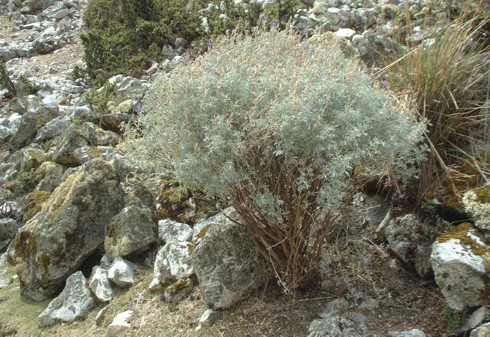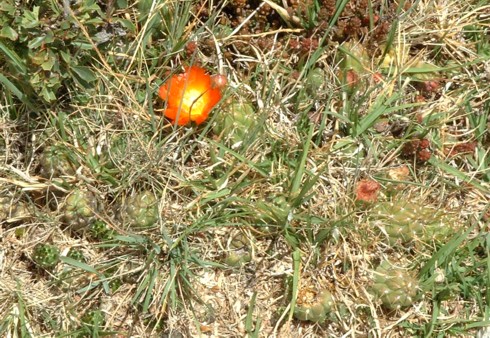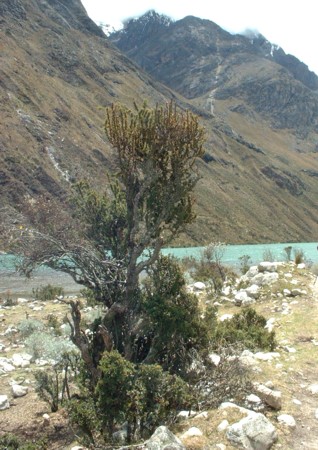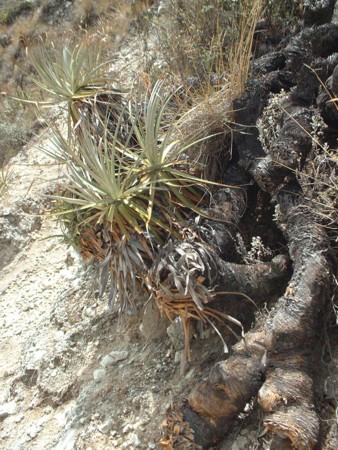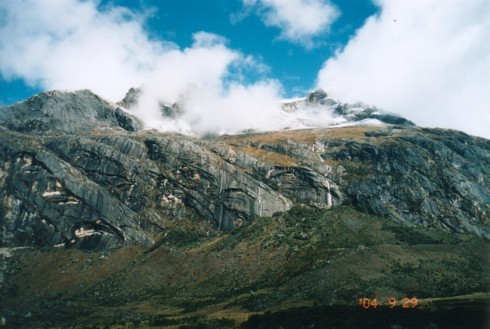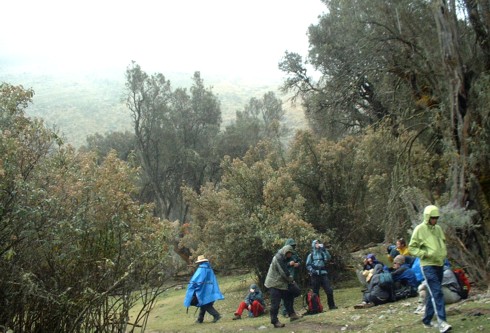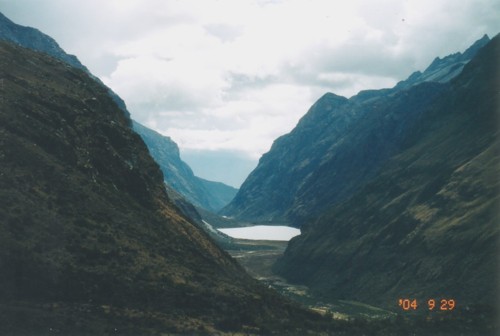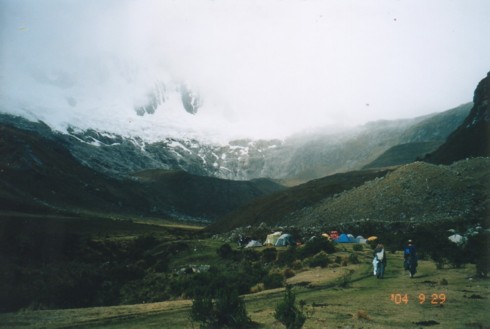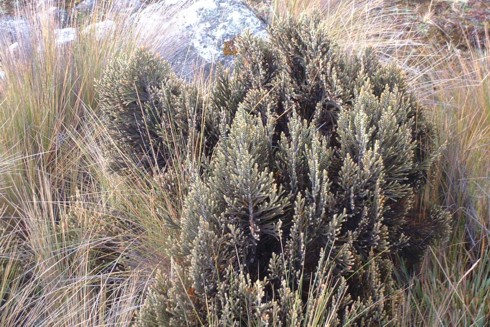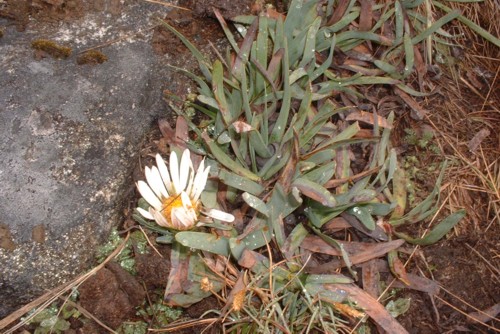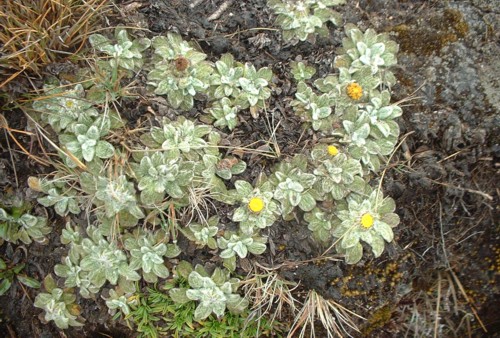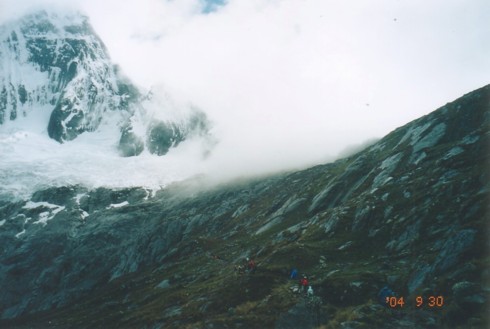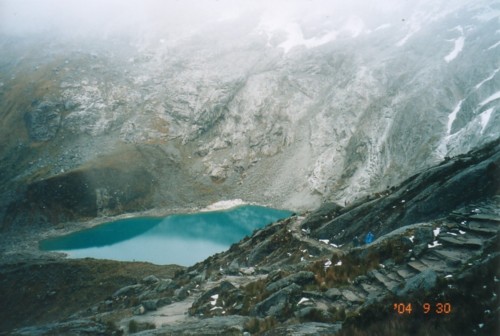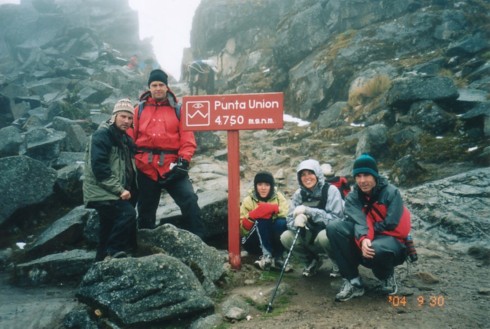|
Page 2 - The Cordillera Blanca I Our next exciting adventure was to be a trek through the Cordillera Blanca. After a few days in Huaraz we were reasonably adjusted to the altitude, although some of our group were suffering from cold and flu-like symptoms.
Faced with the prospect of sleeping in a small room with five sick roommates, I opted instead to spend the night before our departure on the hotel roof. I slept very well and woke up to a spectacular view of the sunrise on Huascaran. Following the rain of the previous day, fresh snow was visible down to quite a bit lower altitudes than it had been before.
Another shot of Huascaran from the highway north of Huaraz, and a giant bottle of "Kola Real!" It wasn't my intention to get it in the picture but now I think it is kind of cool.
Our trek began in a narrow canyon with naturalized Eucalyptus trees. Being on the dry western side of the mountains, all kinds of interesting cacti and bromeliads grew throughout this part of the canyon. A pale-flowered species of what I took to be Oreocallis was also common here. Unfortunately, I was not into taking a lot of pictures at this time, since the group started off moving rather quickly (they would soon slow down as altitude and sickness kicked in) and I was thinking I would see many of the same plants on the return descent of the trek. In this, however, I was incorrect.
In this small sample of the flora found in this canyon, some bromeliads have found a home on a large cactus. I don't know what species they are, though.
Bromeliads, especially Tillandsias, grew on most any surface, including the side of this rock. I have never seen so many bromeliads in one place in my life. I don't know them as well as I would like, but I'm sure this must be one of the best spots in the world for bromeliad diversity.
I know I've seen this tree in pictures, but I can't remember what it is. Look at all those bromeliads! Now at 10,500'.
This has to be something in the Proteaceae family, but I couldn't be sure what it is. Embothrium coccineum supposedly grows even in equatorial regions of the Andes - could this be some odd northern form of it? The obvious difference between this and the familiar Chilean collections of Embothrium is the strongly upwards-pointing leaves and flowers. But I could be wrong: perhaps it's another genus entirely. This plant was loaded with seed capsules, which were similar to Embothrium but rounder and in longer racemes, and, disappointingly, unripe.
Here's something you don't see on a hike at Mount Rainier. In a few places, we passed through ruins of ancient pre-Incan civilizations. Now, plants grew on the crumbling walls, prompting us to consider what kind of people these were and what their lives might have been like.
Polylepis is an intriguing genus of trees belonging to the Rosaceae family and found throughout the high Andes. In some places they form the world's highest forests: in isolated parts of Peru and Bolivia, forests of elfin trees as high as 15,000' may be found. I think these trees have excellent ornamental potential for their beautiful exfoliating red bark and contorted habit. Surely some of them will grow in the Pacific Northwest, but perhaps these equatorial plants are not the most promising compared to Bolivian and Argentine collections. In any case, they were in flower, and it was the wrong time to find any seeds.
A close-up of the bark and leaves of this Polylepis species. Identifying Polypepis species is not, as far as I can tell, an easy prospect. I think I saw at least two, perhaps three species in the Cordillera Blanca.
A showy Passiflora species at 12,500'. I'd be curious to know what species it is, but I couldn't find a tag. It also didn't have any seeds.
This beautiful srubby lupine grew in rockier areas around 12,500'. I have never seen such silvery foliage on any lupine, and the blue flowers were also nice. I also noticed, but did not have the opportunity to photograph, a large lupine which appeared to be a herbaceous perennial, but with enormous leaves and flowers, growing as high as 15,300' in another part of the Cordillera Blanca. I'd better go back and check on that one!
Still at 12,500', this low-growing Opuntoid cactus may be an Austrocylindropuntia species.
A Berberis species.
Two or three Puya species were also common, and most of them looked something like this species. This isn't the best specimen I saw, but I thought the dead trunks were an interesting illustration of what Puya does over time - this plant must be ancient. Above 13,000', these Puyas were much more isolated, but I did see the occasional specimen as high as 14,700'. Of course, the Southern part of the Cordillera Blanca, which I did not visit this time, is home to Puya raimondii, the world's largest bromeliad!
Despite being in a national park, cows and other ungulates wander freely, munching on whatever they can reach. Because of their tendency to graze everything in the wetter and flatter areas, some of the best plants are often on sheer cliffs out of reach to both cows and people.
A glacier with waterfalls in the Cordillera Blanca.
At higher altitudes, enormous Buddlejas dominated some of the valleys. These impressive trees at 12,800' reached 40' or taller in some cases. Most of them had attractive orange or yellow flowers. There appeared to be at least two or three species here, one of which may be B. longifolia.
Now at 13,500', we looked back at this glacial lake we passed on our way up.
And ahead to our camp, below a large glacier. By this time, some of the group were really not feeling well. I, however, still felt pretty good, all things considered. Some people had trouble sleeping at such a high altitude, but I responded to the altitude by being tired enough to sleep for about 12 hours (each) that night and the next. I got up in the middle of the night that night, and the brightness of the full moon at that altitude, and right on the equator, was astounding! One could easily read a book by the moonlight. I considered taking some pictures, but I figured it wouldn't be worth it since it wasn't light enough. Later I regretted that - I think it was easily light enough for a picture, and the middle of that night was the only time the skies cleared out and all the mountains and glaciers were visible.
Above 14,000' the vegetation was dominated by moisture-loving tussock like grasses. Among them were some interesting plants such as this shrub - no idea what it is.
This daisy seemed to prefer very wet areas.
This ground hugging plant has the look of a Helichrysum, but who knows.
Up and up we hiked, higher than I ever thought my lungs would tolerate. At one point it began snowing just a little bit; thankfully, this let up and some stunning glacier views appeared. It also looked like rain had washed away most of the snow from a few nights prior.
As the trail wound higher still, we passed a smaller second lake. Being of glacial origin this one had a very different color.
Finally, we made it to the pass, at 15,600'! |
